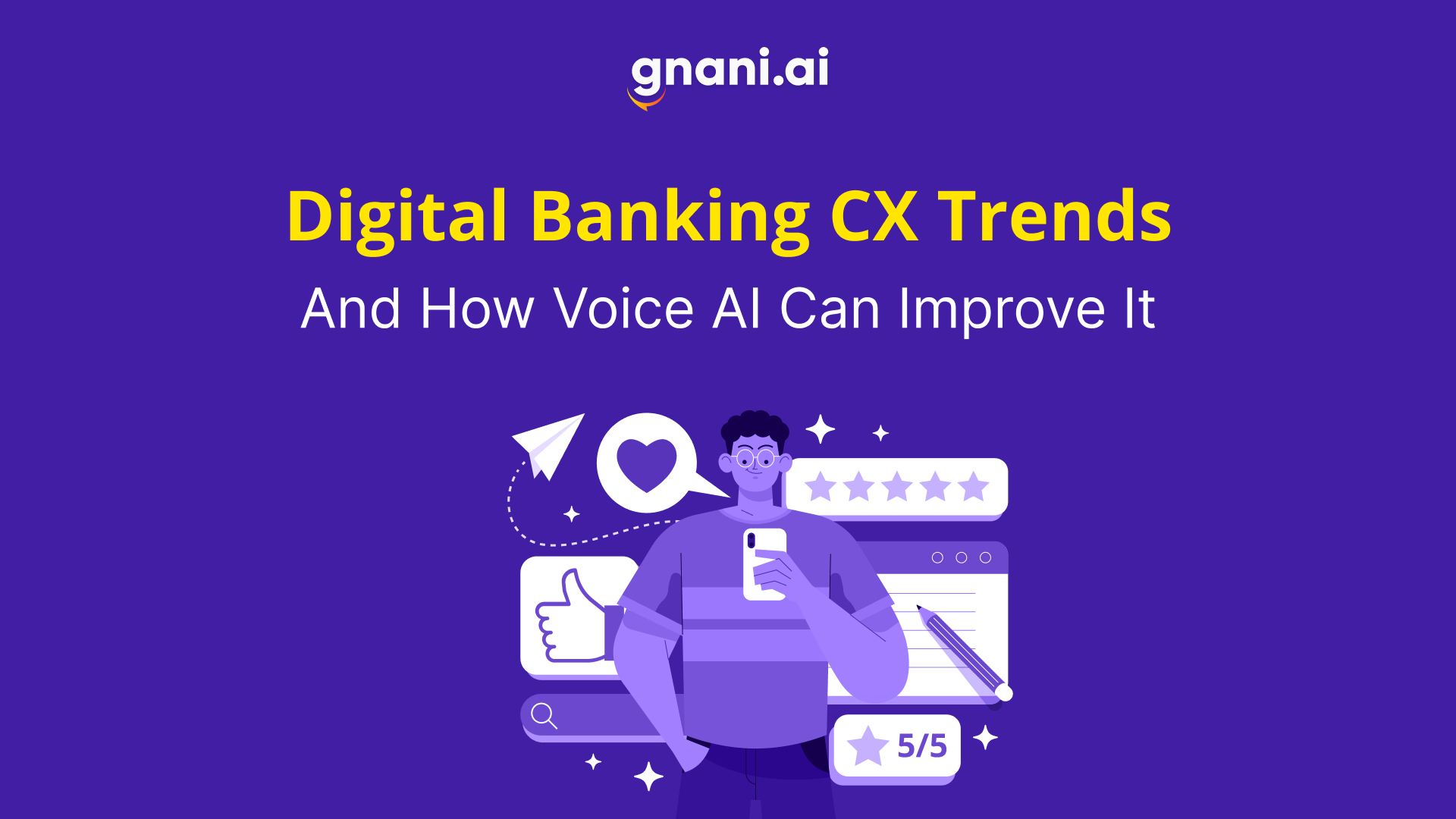As the pandemic fades into public memory, the impact it leaves in terms of the adoption of digital banking is lasting. By 2026, half the global population will be using digital banking. The newer generations of customers are very comfortable with AI and apps. With many new models introduced by non-traditional entrants to the financial sector, banks have stiff competition and must adopt some customer experience trends.
Indeed, a study by Bain & Company indicates that 50% of customers are seriously considering switching banks. The neobanks and alternative fintech brands are gaining acceptance. One of the challenges in digital banking is translating the engaging nature of offline customer relationships to the virtual world. Traditional banks have to beat the edge of these technology-first new-age fintech companies.
We are looking at some of the top digital banking customer experience trends. Investing in their adoption can improve new customer acquisition and customer retention while reducing long-term operational costs.
Offer live assistance on every channel
Both online and offline channels continue to remain relevant, though customers’ online presence is rising. Customers are now present on the bank website, app, social media and use the phone, email, and in-person visits. They expect prompt services on every channel.
Map the customer journey to identify the best touchpoints. Then, integrate the right tools to simplify the process of helping resolve issues. Adding chatbots to product pages, and home pages of bank websites helps users to navigate.
The different channels should also be seamlessly integrated so that customers can be smoothly directed to the best one. If a chatbot connects a customer to a live agent, the waiting time should be as short as possible. Video-assisted technology and co-browsing are helpful to understand customers’ problems.
Scaling up contact centers with virtual assistants
Telephones continue to be a key part of the bank’s contact center and even for sales teams. Though seen as traditional, even millennials do phone calls, especially if another channel proves confusing to use. Seniors, in particular, show resistance to adopting other communication channels.
The continued preference for real-life connections and phone conversations has another aspect. Banks function on public trust, so customers need to feel that their money is safe. Therefore banks have to maintain a sufficiently large staff of contact center agents, tellers, and other customer-facing executives.
Adopting contact center virtual assistants can reduce some of these operational costs. Voicebots can automate mundane tasks like repetitive queries, payment reminders, surveys, etc. They can also work during off-hours, reducing the need for a big graveyard shift staff. When necessary, the bot can escalate to an expert customer support executive.
Voicebots are more helpful in maintaining interpersonal relationships by providing a ‘human touch’. The natural conversational style mimics human speech and makes it convenient to say the query rather than type it out. Conversational voice AI agents also support many languages giving users the flexibility to articulate in languages of their comfort.
Using omnichannel data to make CX decisions backed by solid insights
Since consumers give so much data across the channels, banks can use omnichannel analytics suites and big data tools to mine rich insights. For instance, voicebots permit more call monitoring and better results from analysis of sentiments, satisfaction, and other metrics. The insights can be used to implement features and build products for customers.
Personalized customer experiences are all the rage now. The analytics data is invaluable in identifying upselling and cross-selling opportunities. Use the customer data to understand them and match them with the right products and services.
Prioritize transparency & security to build trust
Today’s customer is savvy and well-informed about all the threats to global financial systems. They also understand issues like privacy, data security, cyberfraud, etc. Therefore, it is imperative that security-building measures should be transparently communicated to assure them of the safety of their money.
Banks should also be prompt about communicating policy changes, terms and conditions, regulatory updates, and essential details like financial performance. AI and blockchain will become integral technologies in the future, and banks should get users to understand them and be on board with the trends.
Customers appreciate the clarity in communications and recommend brands that provide good services. Making people feel valued is the core tenet of the banking business, and therefore, banks should be at the forefront of improving their customer experience constantly.


